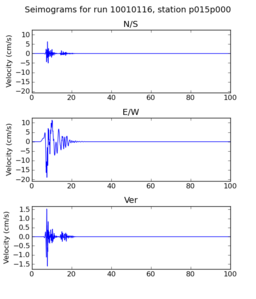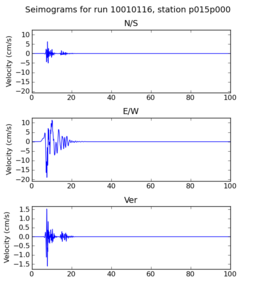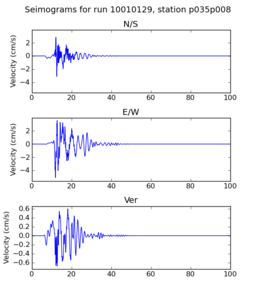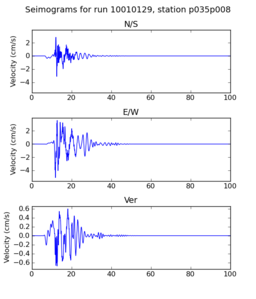Difference between revisions of "Fling Study"
| Line 1: | Line 1: | ||
== Overview == | == Overview == | ||
| − | + | Broadband platform simulation that will defined by PG&E and PEER researchers and run by SCEC Broadband platform group. | |
| + | == Certification of USC HPCC Cluster for Broadband Calculations == | ||
| − | + | Verification and validation of Broadband platform is based on results generated on a SCEC server. Moving the Broadband platform software, re-building it, and re-running it in a different computing environment can cause differences in results. | |
| − | + | Before accepting results generated in a new computing environment, we first must certify that the new computing environment produces results that are equivalent to the results from the original server where the platform was developed. | |
| + | To speed up execution of the Fling study, we plan to run it on the USC HPCC cluster, so we must certify that USC HPCC cluster results are valid and comparable to those generated on broadband.usc.edu. | ||
| + | |||
| + | Here are results from our initial certifications. A researcher ran a small subset of the Fling study on the SCEC broadband server. Then, we ran the same subset on the USC HPCC cluster. Below we compare the output seismograms from both runs, showing that the two results are very similar. | ||
| + | |||
| + | In our discussions, we decided that the certification criteria for this study will include a number of small magnitude ruptures, and a number of large magnitude ruptures, which we will post when they are available. | ||
{| class="wikitable" border="1" | {| class="wikitable" border="1" | ||
Revision as of 23:21, 30 March 2012
Overview
Broadband platform simulation that will defined by PG&E and PEER researchers and run by SCEC Broadband platform group.
Certification of USC HPCC Cluster for Broadband Calculations
Verification and validation of Broadband platform is based on results generated on a SCEC server. Moving the Broadband platform software, re-building it, and re-running it in a different computing environment can cause differences in results.
Before accepting results generated in a new computing environment, we first must certify that the new computing environment produces results that are equivalent to the results from the original server where the platform was developed.
To speed up execution of the Fling study, we plan to run it on the USC HPCC cluster, so we must certify that USC HPCC cluster results are valid and comparable to those generated on broadband.usc.edu.
Here are results from our initial certifications. A researcher ran a small subset of the Fling study on the SCEC broadband server. Then, we ran the same subset on the USC HPCC cluster. Below we compare the output seismograms from both runs, showing that the two results are very similar.
In our discussions, we decided that the certification criteria for this study will include a number of small magnitude ruptures, and a number of large magnitude ruptures, which we will post when they are available.
| Simulation | broadband.usc.edu | USC HPCC cluster |
|---|---|---|
| 10010116 | ||
| 10010129 |



